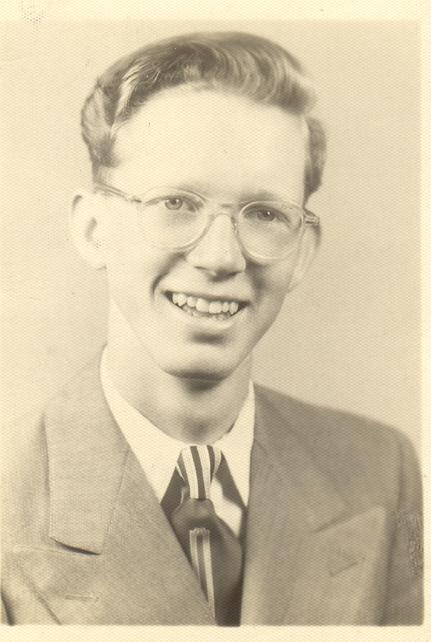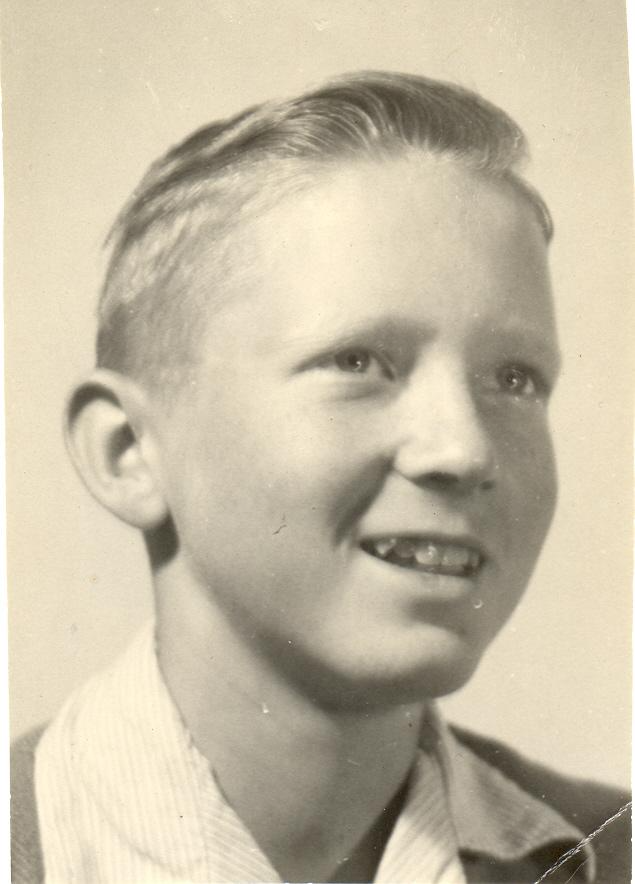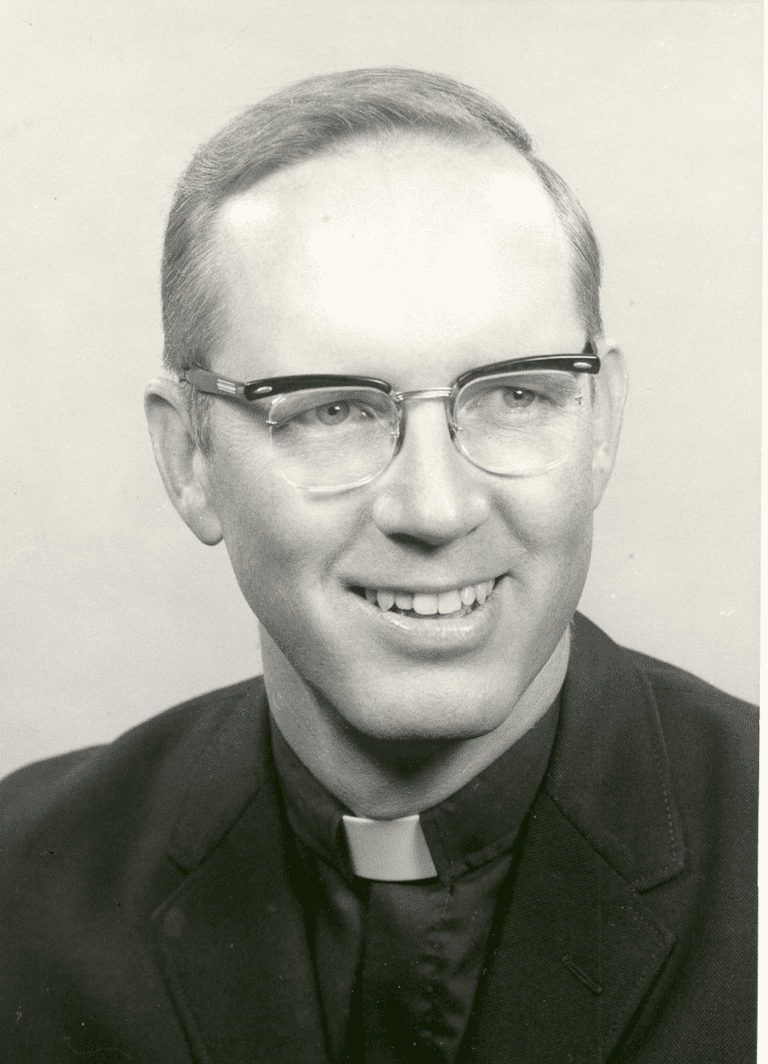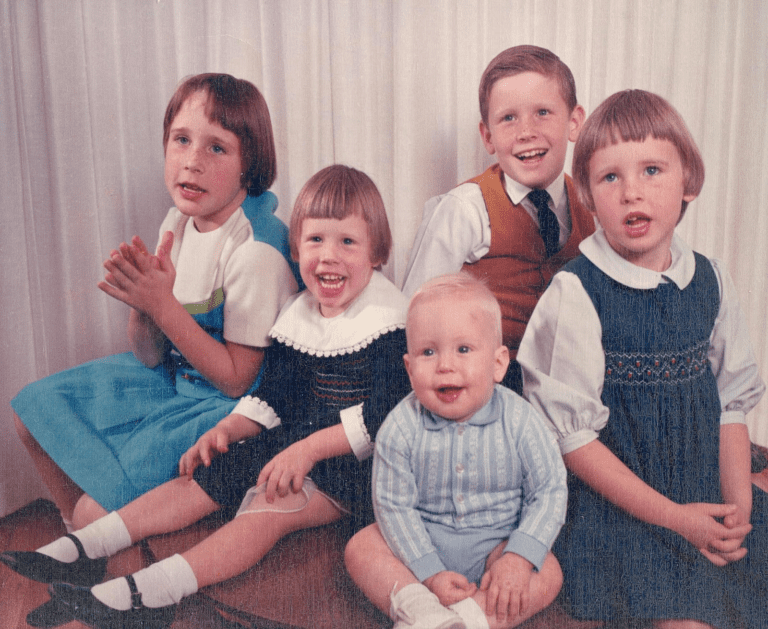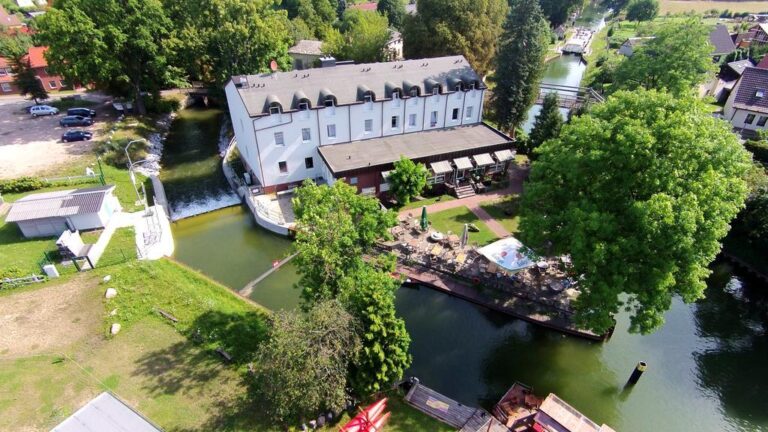Bernhard Theodore Strasen was a Lutheran pastor’s son, born November 3, 1898, in Janesville, Minnesota, a community in south central Minnesota, where his father Henry served Trinity Lutheran Church.
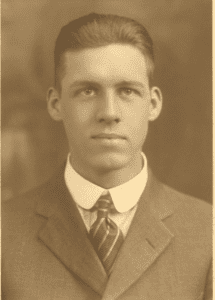
He was the middle child of five, the only boy. As he wanted to be a pastor, following in the steps of his father and grandfather, his father tutored him in Latin so that he could enter Concordia High School and Junior College in St. Paul, Minnesota, in his second year of high school. In those days ministerial training followed a rigid curriculum that was inherited from Germany and lasted six years. It concluded with two years of junior college. Bernhard, here pictured in his graduation year, finished his training with three more years at Concordia Seminary in St. Louis, Missouri, taking theological and practical courses, as well as learning Hebrew. He completed the curriculum and graduated in 1921. The Board of Missions of the Lutheran Church – Missouri Synod was expanding its staff in India and he accepted an assignment to go there, commissioned to be a missionary.
Henriette Ida Julia Strasen, the daughter of Frederick and Pauline Ziegfeld, was born at home in Columbus, Ohio, on January 11, 1894, delivered by a midwife by the name of Betzinger. The house, still at 703 Mohawk Street in German Village, is constructed of red brick, and at that time did not have an indoor toilet. It sheltered the parents and their nine living children (their first child, a girl, had died in her first months). German Village today is a preserved heritage area in Columbus and the red bricks of the street and sidewalk most likely are the same ones on which Henriette played. When she was 23, in 1917, the family moved to a larger house on Forsythe Avenue that rented for $36 a month, instead of the $15 at Mohawk. With most of the children grown and working and still living together the family could afford it. The Forsythe house had a major fire in 1921, and they moved to 1471 Oak Street. A final residence of the Ziegfelds, with some of the siblings still with the parents, was at 91 East Northwood Avenue.
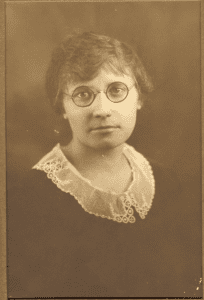
The surviving Ziegfeld children consisted of four boys, then four girls, of whom Henriette was the eldest, and finally one more boy. The family belonged to Zion Lutheran Church, which was in walking distance. Henriette went to elementary school around the corner from the Mohawk Street house, but also spent a few years at a school Zion started, which soon closed. During high school, she worked for F&R Lazarus Company as a cashier or clerk. After high school she attended a two-year course at the Columbus Normal School that trained her for teaching elementary age children. After five years of teaching she didn’t care for it any more and took a business course. She worked as a bill-clerk in a railroad office for a short time, only to return to teaching for another half year. During all this time she lived at home. Henriette was more adventurous than her younger sisters; for example liking to play basketball, even though it wasn’t considered a proper activity for girls. Also, when working for the railroad she was allowed a free pass for a train trip. Knowing she was going to leave the job, she hurriedly took a trip alone to St. Louis, stayed a few hours and returned home – just for the adventure. Her sister Emelie has written, “Henriette did what she wanted to do.”
Still, Henriette, in 1921 and 27 years old, probably surprised everyone when she contacted the Board of Missions of the Lutheran Church -Missouri Synod for overseas work, was accepted, and assigned to India as an Educational Worker. She first met Bernhard in New York at a get-acquainted party of newly graduated seminarians and other Lutherans scheduled to board a ship the next day to India. Dad’s nickname was “Ben.” He was a tall man for his day, about six feet two, slim, and handsome. He had a fine intellect, engaged easily in conversation, liked to be with people, enjoyed stimulating argumentation, and was quite inventive. It well might be, however, that he never courted a girl before he met Henriette. The schools he attended in St. Paul, Minnesota, and St. Louis, Missouri, were all male. Even during the seminary years the men were discouraged from having anything to do with women, at least until they graduated.
Bernhard did want to get married. The missionary group socialized on the ship to India and at stops on the way, such as Port Said, Egypt. There were two or three ladies among them, some already engaged to marry. However, Henriette the only other eligible Caucasian lady; but she hadn’t volunteered to go to India in order to find a husband. Actually, a single white person had few choices. Some did marry native Indians, but those relationships, as well as their Anglo-Indian children, were distasteful to both the ruling British and to the Indian upper-class.
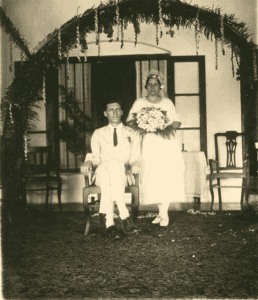
Bernhard Strasen and Henriette Ziegfeld started their separate missionary assignments in Nagercoil, a city about ten miles northwest of the southern tip of India. He spent his first years studying with a tutor to learn the Tamil language and she started her work at the mission’s girl school as its manager. Bernhard was attracted to Henriette, but she not as much to him, maybe because she was four years older than he and, more probably, getting married and having a family was not her quest when she went to India. One story is that she finally accepted his marriage proposal while they were boating together on the lake at Kodaikanal, a mountain retreat for the missionaries. He threatened to dump her into the water unless she accepted. She didn’t know how to swim. The marriage picture, taken on the day of their wedding, June 27, 1923, in Nagercoil, portrays Bernhard seated, with Henriette standing by his chair, in a white dress enhanced by a thrown-back veil. She was about 5 feet, 3 inches tall, a plain-faced woman. She was never one to do much with her thin hair, a family genetic trait. She, like Bernhard, was very intelligent and already as a child and teenager read incessantly.
Bernhard and Henriette Strasen spent four terms of service in India. After each term, each about seven and one half years, the missionaries were given a year and a half furlough to return to their homeland by ship and visit with relatives in a more favorable climate. During their second and third terms they lived in Nagercoil. For their fourth term, starting in January 1947, they returned to India alone, as all the children had remained in the States for schooling or work. They lived again in Valliyoor until 1951.
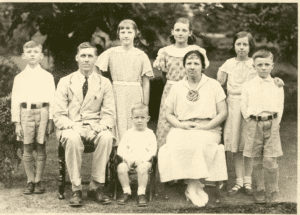
During the first term, four children were born. Pauline Martha arrived on May 15, 1924, in Kodaikanal. Then Ruth Lydia was born October 10, 1925, in Nagercoil, Elisabeth Hannah on February 20, 1927, in Kodaikanal, and Theodore Bernhard on May 29, 1928, in Nagercoil. After their first furlough, David Henry was born on December 5, 1930, and Luther George was born on September 22, 1933, both in Nagercoil. The picture, taken about 1937, shows Bernhard, Luther, and Henriette seated; Theodore, Ruth, Pauline, Elisabeth, and David standing.
Bernhard resigned from the Indian mission field in 1951 and he and Henriette returned to the United States, where he accepted the call to be pastor of Holy Cross Lutheran Church in Wartburg, Illinois, about 40 miles southeast of St. Louis, Missouri. In 1960 he became the pastor of Immanuel Lutheran Church at White Clay Lake, Wisconsin, about twenty-five miles from Clintonville, Wisconsin, where their son Luther was a pastor.
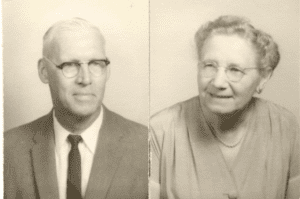
Bernhard and Henriette had these pictures taken after their return from India, probably in the late 1950’s. He decided to retire from the full-time ministry in 1964, and as Luther had accepted a call to a congregation in Greenwood, Indiana, a city ten miles south of Indianapolis, Bernhard and Henriette moved from Wisconsin to Indianapolis, purchasing a house near St. John’s Lutheran Church, in an area called Five Points, on the southeastern side of the city. For a few years, he assisted Pastor Cecil Skibbe at St. John’s. However, in 1967 he had some heart problems and retired completely. In 1968, Luther became the pastor of Peace Lutheran Church in Fort Wayne, Indiana, and in 1969 Bernhard and Henriette moved to Fort Wayne. His heart problems continued to flare-up and on December 30, 1971, he was admitted to Lutheran Hospital in Fort Wayne and unexpectedly died there that night. Henriette lived alone until the fall of 1974, when, after suffering a heart attack, she moved to a special care unit of Lutheran Homes in Fort Wayne. She adjusted to the change and even tutored some younger residents. She also died unexpectedly, in the evening of February 4, 1976, of congestive heart failure. Bernhard and Henriette are buried in Concordia Gardens Cemetery, Fort Wayne. Upon entering the cemetery, the graves are half-way past the first cross road, in the second row on the right.
Bernhard Strasen’s father was Heinrich (Henry) Christian Gottlieb Strasen, who was born February 7, 1869, in Watertown, Wisconsin. He started his ministerial training at Concordia High School in Milwaukee, then attended Watertown College and finally Concordia Seminary in St. Louis, from where he graduated in 1890. His first parish, where he was the first resident pastor, was Trinity Lutheran Church in Janesville, Minnesota. He arrived there unmarried in 1890 and boarded with a parishioner. In 1892 he married Martha Johanna Louise Wichmann, who was born at Farmer’s Retreat, Indiana, on November 14, 1871.
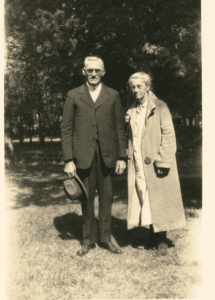
She had moved with her family from Farmer’s Retreat to Freistadt, Wisconsin, where her father, also a Lutheran pastor, had accepted a call. Freistadt is about 35 miles from Watertown, Wisconsin, where Karl Strasen, Henry’s father, was the pastor. It’s said that the Wisconsin pastor-fathers, seeing Henry’s need for a spouse, arranged the marriage, even though Martha wanted to marry another man. In the year that they were married, a new parsonage was built for the couple. All five of their children were born in Janesville. In 1905 Henry accepted the call of Immanuel Lutheran Church, a country congregation a few miles from Courtland, Minnesota, only 30 miles northeast of Janesville. After a pastorate of 33 years at Immanuel, he retired in 1938. They lived their last years in Waseca, Minnesota, in a house next door to their daughter Lydia and her husband, Martin Koehler. This picture is of them in their later years. Henry was a man of slight build, had a mustache, and carried himself with the dignity that befitted the “Herr Pastor” of that time. Martha was a slim woman with a severe face, her hair knotted in the back. Henry and Martha, according to family lore, had a difficult marriage and she was not a happy person. Martha died on September 6, 1943, and Henry lived until January 22, 1955. They are buried in Woodville Cemetery, Waseca, Minnesota. The western entrance to the cemetery has a short road to the north, off of which are two roads to the east. Taking the first road to the east brings one to a jog and there, straight ahead, the Strasen headstone can be seen a few rows in.
Henry Strasen’s father was Karl Johann August Strasen, who was born on May 30, 1827. His father was Joachim Karl Jacob Strasen, a teacher who lived in Jurgenshagen bei Buetzow, Mecklenburg-Schwerin, Germany, and who was married to Sophia Catherine nee Dopp, who was born in 1801 and died October 9, 1834. Her parents were Johnann Dopp and Lise nee Borgward of Gross Belitz, Mecklenburg-Schwerin, Germany. Joachim Karl and Sophia Strasen’s son, Karl Johann, was trained as a teacher in Germany and then came to the United States in 1846 under the auspices of Pastor Johannes Loehe, who recruited men for ministry in the States and had already given Karl some theological training. Carl (he anglicized his name after his arrival in the States) attended a new seminary in Fort Wayne, Indiana, and, after a year and a half, was in its first graduating class in 1847. Some years later that seminary was moved to Springfield, Illinois, and then, in 1975, back to Fort Wayne. After his graduation, Carl traveled to St. Louis, where C.F.W. Walther, the first president of the Lutheran Church-Missouri Synod (then known, in German, as the Evangelical Lutheran Synod of Missouri, Ohio, and Other States) recommended him as a Candidate of Theology.
Henry Strasen’s mother was Rosine Auguste Mueller. She was a part of what is known in the Lutheran Church-Missouri Synod as the “Saxon Immigration.” In 1839, Lutherans left Saxony, Germany, because of their religious convictions and the harassment they suffered there on account of them. Under the leadership of Pastor Martin Stephan, three shiploads of passengers started from Germany, but one ship was lost at sea. In the Lutheran Church-Missouri-Synod’s mind-set, the Saxon immigrants are considered on a par with the Pilgrim Fathers. Among the arriving immigrants on the ship Republic was Johann C. Mueller, a tile and brick maker born in Saxony in 1783, and his wife Marie C. nee Mueller, born in Germany in 1791, and their six children. One of them, young Rosine, had been born on April 10, 1831, in Planena bei Halle, Prussia. A son had died at sea. They disembarked in New Orleans, and then traveled by the steamboat Knickerbocker to St. Louis. Some of the immigrants settled there, and others in Perry County, Missouri. Rosine, went with her family to Altenberg in Perry County, but after her parents died worked in St. Louis as a maid.
Carl Strasen, upon his graduation from the Fort Wayne Seminary and not married, in December of 1847 became pastor of rural Trinity Lutheran Church, Horse Prairie, Illinois, three miles east of Red Bud, Illinois. Pastor Martin Stephan, who had been deposed as the leader of the Saxon immigrants in Perry County and exiled to Illinois, had served the previous year, until his death. In 1849, President Walther, having introduced Carl and Rosine to each other, officiated at their wedding. She had twelve births, six of which survived early childhood. Heinrich Christian Gottlieb was their tenth child. Carl’s next parish, in 1850, was Holy Cross Lutheran Church in Collinsville, Illinois. Then, in 1859, he became the pastor of St. John’s Lutheran Church, Watertown, Wisconsin, and served there for 41 years.
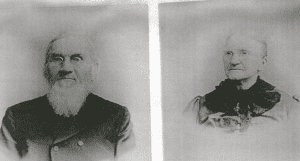
From 1875 to 1882 he was also the first president of the Northwestern District of what is now the Lutheran Church-Missouri Synod. It comprised Minnesota and Wisconsin and, when it was divided, he became the first president of the Wisconsin District, from 1882 until 1885. Carl died on February 26, 1909, Rosine having preceded him on April 22, 1896. They are buried in the Lutheran Cemetery near Watertown, Wisconsin, at a gravesite immediately to the right of the cemetery’s middle entrance, between a service building and the county road. Her headstone has only the name Auguste on it, so she might have gone by that name, instead of Rosine.
The parents of Bernhard Strasen’s mother, Martha Strasen, were both Wichmanns. August Julius Theodore Wichmann (known by his third name) and Wilhemena (known as Emelie) Wichmann were cousins. Theodore was born in Gromsee, Mark Brandenburg, Germany, on August 15, 1826, the son of Carl D. Wichmann and Wilhelmine nee Roeme. He studied to be a pastor at the Mission Institute in Berlin with the hope of being sent to Africa as a missionary. Instead, answering an appeal by Pastor F. K. Wyneken, one of the founders of the Lutheran Church-Missouri Synod and its second president, he came to America. He was already engaged to marry Emelie, but preceded her in 1848 to Cincinnati, Ohio, to where he had been commissioned to be a missionary. He accepted the call of a Zion Church to be their pastor, but quickly realized that the majority of the members wanted to adhere to Reformed doctrines as expressed in the Heidelberg Catechism. No longer permitted to be thoroughly Lutheran, he tendered his resignation. Nineteen other members also withdrew and, on November 21, 1849, they organized Trinity Lutheran Church, with Theodore continuing as their pastor. A simple brick building was constructed, without a steeple or bell, and was dedicated in June of 1850. The ground floor had a schoolroom, as well as a parsonage of three rooms. Worship was held on the second floor. Trinity was the mother church of the Lutheran Church-Missouri Synod in Cincinnati. In 1870 a new church was constructed on the site of the first building. In 1927, in conjunction with a merger with Emmaus Lutheran Church, the two congregations became Concordia Lutheran Church. Since then, the congregation’s buildings are in another area of Cincinnati, but it continues to date itself back to 1849.
Emelie Wichmann was born on October 26, 1827 in Lychen, Mark Brandenburg, Prussia, the daughter of Johann Wichmann, a master tailor, and Anne Dorthea nee Rueckert. After her arrival in Cincinnati, she and Theodore were married in September of 1849, just a few months before he resigned his pastorate at Zion. Thirteen children were born to the marriage, five sons and eight daughters. In 1858, Theodore accepted a call to
serve St. John’s Lutheran Church, in a hilly area west of Dillsboro in southeast Indiana called Opptown, where the congregation worshipped in a log cabin church. Previous pastors at Opptown had at first stated that they were Lutheran, but were found to be promoting Reformed theology. The congregation sought Pastor Wichmann’s advice and eventually extended him a call, which he accepted, to be their pastor. During the Civil War, his parish paid $1,023 to have him exempted from service in the northern army and for someone else to take his place. In 1866 the congregation voted to build its sanctuary at a new site, where it continues to be used for worship. The settlement is now named Farmers Retreat because farmers during the Civil War hid their cattle in the hills and ravines of that area to preserve them from marauding Confederate soldiers.
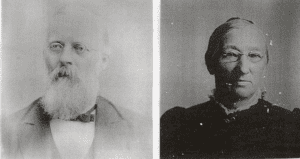
After 23 years at Farmers Retreat, in 1881, Theodore accepted a call to Trinity Lutheran Church, Freistadt, Wisconsin; the first Lutheran Church-Missouri Synod congregation in Wisconsin, in 1839. During his pastorate, the present sanctuary at Friestadt was built, with dedication on October 12, 1884. It’s the congregation’s fourth church building. It was at this time that Henry Strasen was introduced to the Wichmann’s daughter Martha, and the next generation began. Theodore died on September 3, 1894, while still the congregation’s pastor. He had been in ill health for about six years. One night he retired to bed late and a few minutes later suffered a stroke and died. His daughter’s father-in-law, Carl Strasen, officiated at the service. Emelie died on December 17, 1908. They are buried in the Trinity Lutheran Church Cemetery. The plot with its large marker is at the southeast corner of the cemetery, north of the church.
Henriette Strasen’s father, Frederick Augustus Ziegfeld, was born in Amsterdam, Holland, on June 19, 1860 and came to Columbus, Ohio, with his parents when he was eight years old. His mother considered him a sickly child and didn’t allow him to go to school regularly, and so he finished only about the fourth grade. His father owned and operated a bakery that was well known in its day for its baked goods. It’s reported that Grandmother Ziegfeld, however, actually “ruled the roost.” She insisted that her boys work in the bakery and it was there that young Frederick learned the art. He also enjoyed baking at home for his wife and children. At Zion Lutheran Church in Columbus he met and eventually married Pauline Emelie Horst. She was born in Peru, Indiana, on April 29, 1859, the daughter of a Lutheran pastor who had come to the Columbus area. Pauline had about seven years of schooling and had taught school for a time.
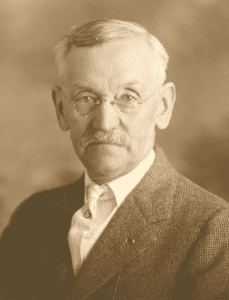
farm to produce milk and cream for the bakery, but that failed because Frederick knew baking, not animal husbandry. The bakery eventually couldn’t financially support the extended family and closed. In the early 1900s, up to about 1925, Frederick worked as a maintenance man at the Henry C. Werner Co., a wholesale shoe distributor. The company went out of business and he became a stock clerk at the Pitts Shoe Co., a retail business.
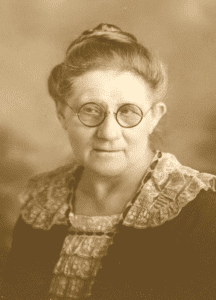
Frederick also set up a small store in the front room of the Mohawk Street home, with Pauline as the clerk. But with all the children about her and few customers, it went badly and soon closed. Pauline died on March 20, 1929, and Frederick on October 25, 1939. Frederick and Pauline Ziegfeld are buried in Sunset Cemetery, Columbus, Ohio.
The father of Frederick Ziegfeld was Carl Gerhard Ziegfeld, who was born at Jemgung, Grand Duchy of Oldenburg, Germany on April 16, 1822. He trained to be a baker and, after receiving his master papers in Germany, moved in 1845 to Amsterdam, Holland. Carl had three brothers, one of whom, Florenz, was secretary to the Grand Duke of Oldenberg. Sons continued to be named Florenz. Florenz’s son, Dr. Florenz Ziegfeld, was head of the Chicago College of Music and one of his sons was the American showman Florenz Ziegfeld (1869-1932), the creator of the Ziegfeld Follies and husband of the actress Billie Burke. Another son of Dr. Ziegfeld was Julius, the organist at Trinity Lutheran Church in Columbus, Ohio. It was through Julius Ziegfeld’s urging and coaxing that Carl Gerhard Ziegfeld and his family left Amsterdam and settled in Columbus.
In Amsterdam, Carl Ziegfeld had met and married Elizabeth Vrind in 1849. Elizabeth was born on February 8, 1827 in Amsterdam, the first child of Conrad Vrind and Vrotie nee Westerhoff. All of Carl and Elizabeth’s eleven children were born in Amsterdam. The seventh was Frederick. The couple came to Columbus, Ohio, in 1868 with five sons. Three boys and three girls had died in Holland. The name Florenz, a masculine form of the feminine Florence, from the Latin for “flower” or “bloom,” continued to flourish also in their family. After their first child, Florenz, died, the second, a girl who also early died, was named Florendina (maybe another name from the Latin root). So the next child, a son, was then again named Florenz. The name reached the next generation when their son Frederick and his wife Pauline, Henriette’s parents, named their third child Florenz. As already stated, Carl operated a bakery on East Main Street in Columbus and later tried a catering business. He died on May 2, 1887 and Elizabeth on August 23, 1898. Carl and Elizabeth Ziegfeld are buried in Greenlawn Cemetery, Columbus, Ohio.
Henriette Strasen’s mother, Pauline Ziegfeld, was the daughter of George Henry Horst and Emma nee Barthel. George Henry (he was known as Henry) was born on January 28, 1829, in Vogelsberg, Oberohnen, Hessen-Darmstadt, Germany, where his father was a wagon maker and also had a small farm. Henry and his brother John were schooled in Germany and it bothered Henry that his education as a young man was not Christian. The brothers left Germany to avoid the theological rationalism that was rampant in the church in Germany and came to the United States in 1850. However, another version is that they left Germany to escape being drafted into the army. They studied to be pastors at the seminary in Fort Wayne, Henry graduating in 1856. John graduated in 1859 and the last congregation he served in his years of ministry was Immanuel, Courtland, where Henry Strasen later was the pastor, and he is buried in that church’s cemetery. Henry Horst, upon his graduation, was called to Roseville, Minnesota, to assist a Pastor Graebner who was ill. He was ordained there in 1856. That fall, he was called to be an assistant to Pastor Stuerken at St. James Lutheran Church, Logansport, Indiana. In November of 1856, at his church, he married Emma, a marriage that it is said was also arranged by Pastor C. F. W. Walther, as had been the marriage of Karl Strasen and Rosine nee Mueller. Emma Barthel was born on November 28, 1834, in Neuwiese, Saxony, Germany, where her father owned a spice and grocery store. Her mother’s name was Emelia nee Guenther. The family came to America in 1853 and lived in Fort Wayne, Indiana, for a short time and then moved to St. Louis. Her mother died soon after they came to America and Emma kept house for her family until her marriage. Her father disappeared; some say he went to Cairo, Illinois, with a considerable sum of money, and others say he went to Kansas.
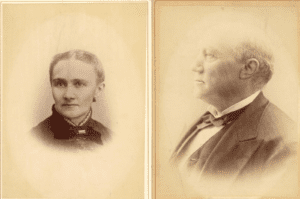
Henry and Emma’s marriage was blessed with five sons and five daughters, the second child being Pauline Emelie, the future wife of Frederick Ziegfeld. In 1857, Henry accepted the call to serve three affiliated congregations in Peru, Leonda, and Rochester, Indiana. Then, in 1859, he moved to Grove City, Ohio, to serve a mission congregation. In 1862 he also began to serve St. James Lutheran Church in Wittenberg, on Hilliard and Rome Road (now listed at 5660 Trabue Road, in Columbus, Ohio) as well as St. John Lutheran Church at 6135 Rings Road in Amlin, now Dublin, Ohio. He gave up the congregation in Grove City and was pastor of the other two for the next twenty-nine years. He retired in 1891 due to ill health and died of a kidney ailment on February 27, 1892. Emma had already died on January 28, 1885, from blood poisoning. Henry and Emma Horst are buried in St. James Lutheran Church cemetery next to two sons who preceded them in death. A tall tombstone close to the church building marks the site.
These, then, are the ancestors of Bernhard and Henriette (Ziegfeld) Strasen.
Johann Dopp/Lise Borgward
J. Karl Strasen/Sophia Dopp
K. Strasen
J. Mueller/M. Mueller
C. Wichmann/W. Roeme
J. Wichmann/A. Rueckert
C. Vrind/V.Westerhoff
Barthel/E.Guenther
Carl J. A. Strasen/Rosine A. Mueller
Theo. Wichmann/Emelie Wichmann
Carl Ziegfeld/Eliz. Vrind
Henry Horst/Emma Barthel
Henry Strasen/Martha Wichmann
Frederick Ziegfeld/Pauline Horst
Bernhard Strasen/Henriette Ziegfeld
Pauline Martha
Ruth Lydia
Elisabeth Hannah
Theodore Bernhard
David Henry
Luther George
All of the six children of Bernhard and Henriette Strasen received most of their elementary education at the mission school in Kodaikanal, India, and then proceeded to various schools when they came to live permanently in the United States.
Twenty-four grandchildren, forty-nine great-grandchildren, and four great-great-grandchildren are natural descendents of Bernhard and Henriette Strasen.
Pauline “Polly” Strasen graduated from Milwaukee Lutheran High School, but in her sophomore and junior years attended the high school department of Dr. Martin Luther College in New Ulm, Minnesota. She then attended and graduated from Concordia Teachers College, River Forest, Illinois. She married Charles Fenton, a civil engineer from Detroit, in 1949. and they lived in the Detroit area, where she eventually became the principal of the Detroit Deaf Institute. During retirement, they moved to Port Huron, Michigan, where Charles died in 1995. Pauline died in 2000 in Canton, Michigan.
Ruth Strasen also attended Milwaukee Lutheran High School and Dr. Martin Luther College’s high school department as Pauline did. She then took more schooling at Valparaiso University. She married Roy Newquist, a writer, in 1949. They lived in the Minneapolis and Seattle areas, and then settled in Park Forest, Illinois. They were divorced in the 70s and Roy died in Los Angeles in 1997. Ruth took care of her children, while becoming a successful Prudential Life Insurance salesperson. In retirement she lives in Chicago.
Elisabeth “Betty” Strasen attended high school at Concordia High School and Teachers College (CTC) in River Forest, Illinois and then was employed as a waitress. She married Frederick Nohl in 1948, a graduate of CTC. They lived in Kankakee, Illinois, where he was principal of St. Paul’s Lutheran School, then for a year in Forest Park, Illinois, and finally in St. Louis, where he worked for the Lutheran Church-Missouri Synod’s Board of Christian Education. They divorced, and he died in 2000 in Zimbabwe, Africa, where he had gone to teach. Betty reared their children and later worked at a hospital in St. Louis until her retirement. She married Robert Long, a widower, in 1996.
Theodore “Ted” Strasen took grades seven and eighth in Waseca, Minnesota, attended high school at Concordia High School and College, St. Paul, Minnesota, and graduated from Elgin High School, Elgin, Illinois. He joined the U. S. Navy and was sent to school, at Central Michigan College in Mount Pleasant, Michigan, and then a semester at Valparaiso University in Indiana. The navy, downsizing, released him. After a few years in the Chicago area, he joined the U. S. Army and served in Korea. He married Dorothy in 1949 in Haverhill, Massachusetts, as he was ending his army stint. He learned the shoe-making trade and through the years was a designer, pattern maker, etc., and knew the trade so well that he became a consultant and lived, at times, in Puerto Rico and Mexico.
David “Dave” Strasen spent his freshman year of high school in Elgin, Illinois, and the remaining years at Concordia High School, Fort Wayne, Indiana. He served in the U.S. Army at Fort Lewis, Washington, and then attended Valparaiso University. He married Annette in 1954. The family moved to Seattle and Dave became an expert in computers. But the marriage didn’t last; Annette, who is now deceased, moved to California and David reared the children. He married Lila around 1973, and it also ended. Dave died in 1991, but in the last days of his life married Prudence, who had been his companion for some time.
Luther “Lu” Strasen took eighth grade in Elgin, Illinois, attended Concordia High School and College in Fort Wayne, Indiana, and then graduated from Concordia Seminary in St. Louis, Missouri, in 1958. He served parishes in Clintonville, Wisconsin; Greenwood, Indiana, and for twenty-eight years in Fort Wayne, Indiana, until his retirement. He married Arlene, a Fort Wayne native and a registered nurse, in 1957.
